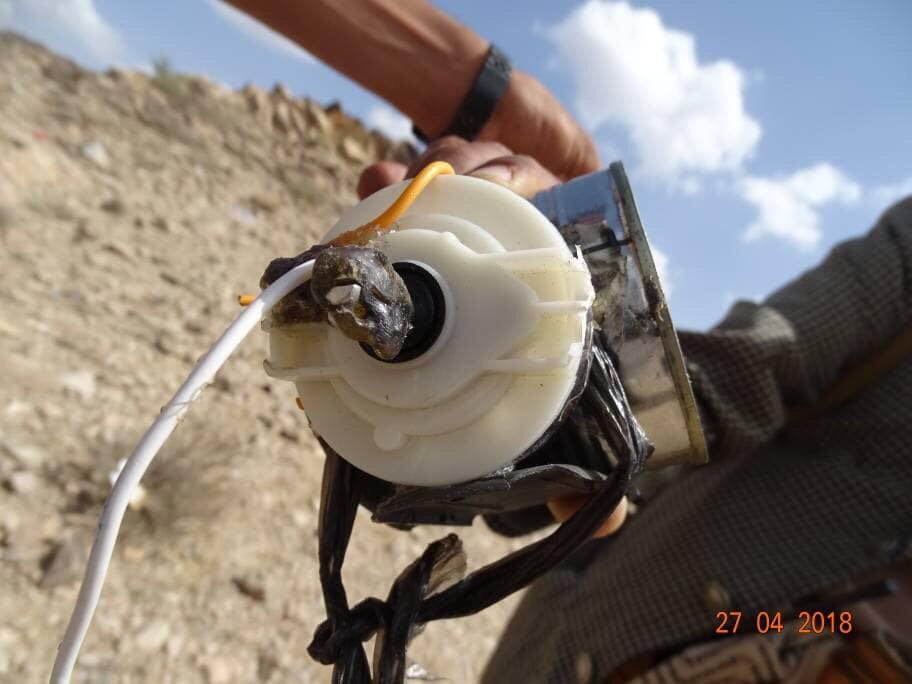A flagrant violation of humanitarian and international laws..Houthi mines kill Yemenis
English - Tuesday 05 April 2022 الساعة 09:04 pm Mocha, NewsYemen, private:
Mocha, NewsYemen, private:
The terrorist Houthi militia, Iran’s arm in Yemen, has continued for seven years to commit thousands of crimes in violation of humanitarian and international laws and treaties. However, vast minefields remain in the various most terrorist Yemeni governorates. It destroys the present and continues to threaten the lives of millions of Yemenis in the future.
The militia is mining neighborhoods and areas under its control in order to impose a long-term siege on civilians, and it is laying death mines in random ways and without maps, which makes it difficult to get rid of them, which is exactly what this terrorist militia aspires to.
Civilian victims
On March 20, three civilians from one family were injured; As a result of the explosion of a landmine planted by the Houthi militia in the village of “Al-Kadh” in Al-Khoukha District, south of Al-Hodeidah Governorate, one of them is a child: (Nujoud Yahya Ahmed Hassan Maqhshi, 4 years old, her father Yahya Ahmed Hassan Maqahshi, 24 years old, and her mother Fatima Salem Ahmed, 20 years old) .
Two days before this criminal incident, specifically on March 17, two separate incidents occurred in the governorates of Al-Hodeidah and Al-Bayda, where five civilians from one family, including two children, were killed, as a result of the explosion of a landmine left by Al-Houthi, in a civilian vehicle they were traveling in while they were passing through the "Jawlat Al-Matahin" area. In the eastern side of the city of Al-Hodeidah, while a child was killed and another seriously wounded, including the amputation of one of his feet, by the explosion of a Houthi landmine in the village of Al-Salb, Al-Zahir District, Al-Bayda Governorate.
Houthi and ISIS policy
The scorched-earth policy pursued by the Houthi terrorist militia, similar to the terrorist organization ISIS, is nothing but a means of revenge against civilians in Yemen. The militia has planted millions of mines in public and private facilities, bridges and roads, in addition to planting individual mines in farms, residents’ fields and homes, in A flagrant violation of international laws, but it focused on populated areas, causing the deaths of thousands of Yemenis and the injury of tens of thousands, most of whom lost limbs, and the displacement of thousands of residents from their homes for fear of death that awaits them with every step.
More than 100 victims in 2022
In a statistic tracked by the author of the report, the number of civilian mine victims in Yemen since the beginning of this year 2022 has reached about 54 civilian deaths, and 48 injured, the majority of whom are children and women. Al Hudaydah governorate topped the number of victims, followed by Al Bayda, Taiz, Marib, Al Jawf and Shabwa.
It is worth noting that the incidents of mine explosions and the kidnapping of civilian lives and members in Yemen have become almost daily. Not a day passes before you hear that there are dead and injured from mines of the death and terrorism militia.
According to demining experts in Yemen, the Houthis have planted mines in various forms in the form of “rocks”, and they are planted in mountainous areas, and in the form of “sand blocks” that are planted in deserts and valleys, and they have also made “explosive devices and mines” to suit their cultivation inside cans and food bags. To achieve maximum loss of life.
Osama Al-Qusaibi, director general of the Masam Saudi Demining Project in Yemen, told Anadolu Agency that since its inception (in June 2018) and until the end of January 2022, the project managed to remove 311,658 mines, explosive devices and unexploded ordnance.
He explained that during the year 2021 he was able to remove 96,714 mines and explosive devices from several liberated Yemeni governorates, pointing out that the teams succeeded during January 2022 in removing 15,232 mines, most of which were removed from the newly liberated areas in Shabwa, Marib and Hodeidah.
Al-Qusaibi added,"There are several types and shapes of mines that have been discovered, the majority of which are home-made mines and explosive devices, all of which are modern mines with advanced technologies. More dangerous and in various forms in the form of stones and others."
The process of planting mines, according to the official, is still going on, and there are several areas that Masam was about to declare as safe areas of mines, and they were mined again in larger quantities and in huge quantities, including the districts of Usaylan, Bayhan, Ain, Shabwa and Harib in Ma'rib governorate.
In September 2021, the United Nations announced in a statement that 1,424 civilians were killed during four years as a result of mines and unexploded ordnance left over from the war in Yemen.
A statement issued by the Office of the Representative of the Humanitarian Coordinator in Yemen (OCHA) said, "Landmines and explosive remnants of the bloody war that has plagued Yemen for seven years continue to kill and maim civilians, and pose great risks to aid workers."
Tens of thousands of mines, bombs and explosive devices, which have been planted by the Houthi militia since its coup against power in 2015, are spread in several Yemeni governorates.
On December 26, the Saudi project, "Masam" for demining in Yemen, estimated in a report that the number of Houthi mine victims in Yemen amounted to about 10,000 people, mostly women and children, indicating that the Houthi militia continued to lay mines.
Mine traces
Lawyer and human rights activist, Mukhtar Al-Wafi, said in a statement to NewsYemen that the violations committed by the Houthi militia when planting mines use this type of weapon, which is forbidden and criminal in international humanitarian law, and in the international mine ban agreement ratified by Yemen, and the other thing is that The militia did not observe the simplest customs and traditions in the war. It deliberately planted mines in the main roads, farms, next to and inside citizens’ homes, places for grazing livestock, children’s play areas and other places frequented by civilians, especially women and children.
Al-Wafi added, the militia has mined land and sea and planted more than two million mines in various provinces that are witnessing battles, noting that there are nearly five thousand casualties among the dead and wounded, most of whom are children and women, and victims of demining experts.
As for the impact of planting mines in the present and the future, there are great and tragic effects left by mines, whether in the environment or in humans. There are many victims of these mines in the present, and we will continue to suffer from their effects and the lives they will claim in the future, especially in areas that have not been cleared of mines or that the terrorist militia has not disclosed. about its cultivation.
Al-Wafi called on the international community to assist the bodies working in demining and provide them with modern equipment, to punish the perpetrators of these crimes, and to compensate and provide justice to the victims.
One of the effects is also that the victims of these mines who survive remain disabled, either amputated feet or limbs, and unable to work. The most witness to this internationally prohibited crime is the number of people currently disabled due to these Houthi mines, and what will result in the future.
There is a law in Yemeni law that prohibits the use of mines, which is Law No. 25 of 2005, called the Law (Prohibition of Production, Possession, Use, Transfer and Trafficking of Anti-Personnel Mines).
The use, cultivation, and transfer of mines is a flagrant violation of the individual mine-ban treaty known as the 1997 "Ottawa" Convention, national laws and international conventions for the protection of civilians during armed conflict.
In 2009, Yemen announced the completion of demining in Aden after clearing and recovering mine-affected areas.
Types of mines used
According to employees of the Mine Action Center, there are two types of anti-personnel mines that have been cleared in some liberated areas, a PPM-2 antipersonnel mine made in the former East Germany, and another type GYATA-64 made in Hungary. It also found TM-62 and TM-57 anti-vehicle mines manufactured in the former Soviet Union.
According to information from mine experts, the most dangerous mines are the so-called LT10, which is called "Khomeini", which are plastic mines that are difficult for devices to detect, and that some mines are locally made of internationally banned phosphorous, high explosive TNT and other very dangerous materials.
According to Masam Project, in a statement earlier this year, the Houthi militia has developed techniques related to the manufacture and cultivation of mines, which was evident through the project teams' dealing with mines and the extent of development and danger from year to year.
The statement confirmed that the project teams are currently dealing in Shabwa governorate in the three districts liberated from the militia by the southern giants brigades, with innovative and booby-trapped mines and others made of new materials that were not present in the mines that Masam’s teams removed during the past years. Others are Iranian-made, apparently from "Lebanese Hezbollah" or locally with Iranian expertise.
Victim-operated IEDs that explode as a result of person approaching or coming into contact with them fall under the definition of antipersonnel mines, which are prohibited under the Mine Ban Treaty.
Here are some pictures of mines and explosive devices used by the Houthi militia:
Mine nets

deceptive figures

killer games
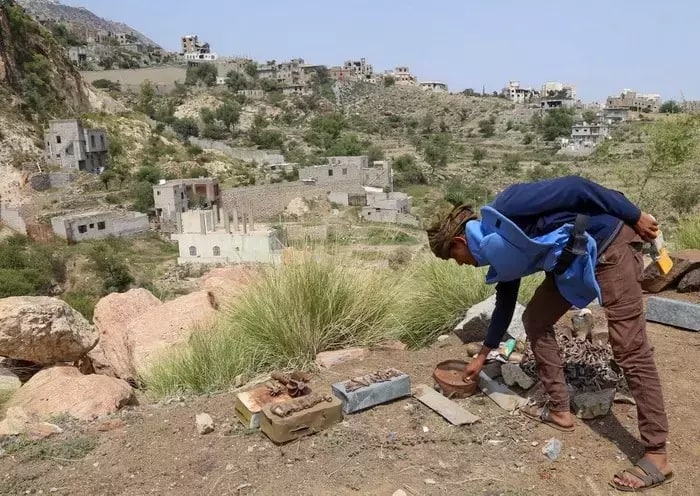
building blocks
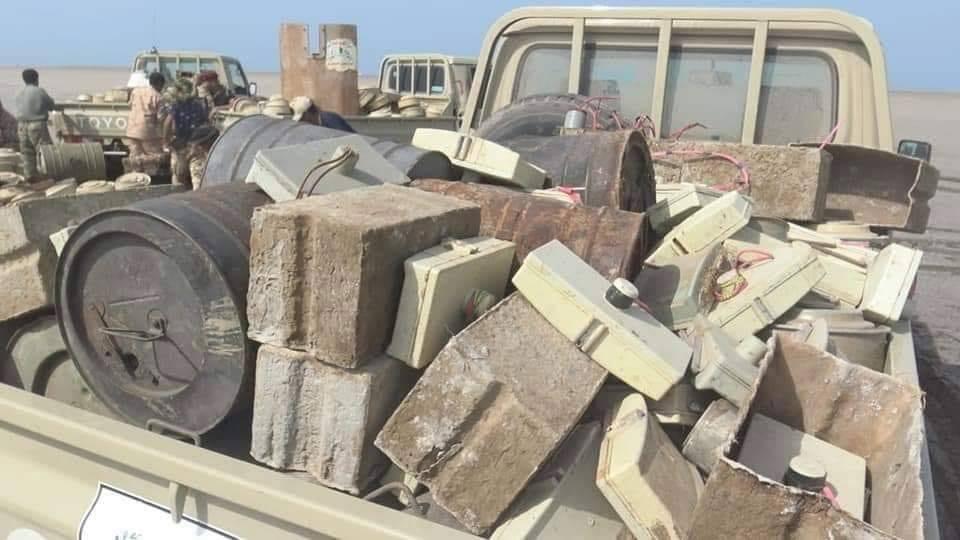
camouflaged bodies
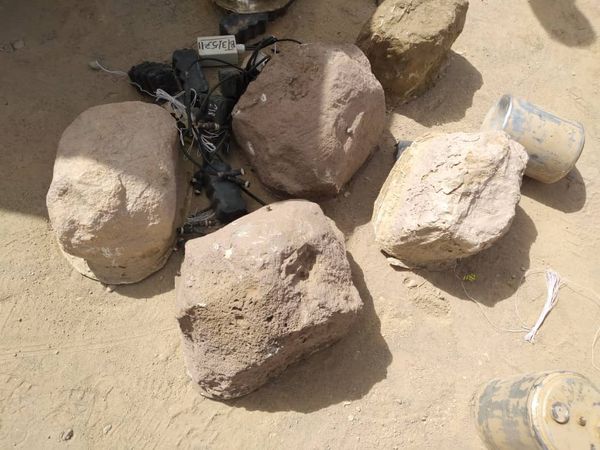
palm trunks
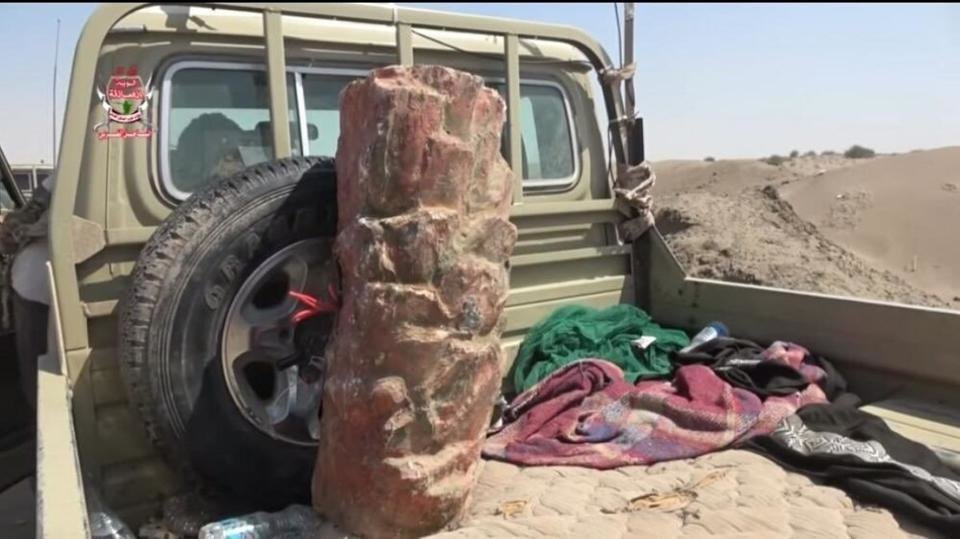
killer frames
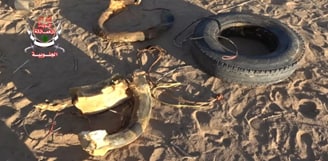
killer gloves
